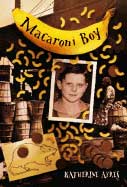 As a Pittsburgher, Groundhog Day is something of a Big Deal — admittedly, not a tremendously big deal — something on a scale between President’s Day and a Steelers Super Bowl win. We’re the closest major city to Punxutawney, the home of Groundhog Phil, who is the designated rodent for predicting the weather via shadow. (Yes, I know you probably knew that. But there are many who don’t. My father once spent a Feb. 2nd on an airplane next to a British gent. Said gent listened to my father’s explanation of the day and seriously thought he was getting his leg pulled. If you really need to know All the Facts, go to groundhog.org, where you can find interesting tidbits such as the fact that Phil was, until the reign of King Philip, once known simply as “Br’er Groundhog.” Huh.)
As a Pittsburgher, Groundhog Day is something of a Big Deal — admittedly, not a tremendously big deal — something on a scale between President’s Day and a Steelers Super Bowl win. We’re the closest major city to Punxutawney, the home of Groundhog Phil, who is the designated rodent for predicting the weather via shadow. (Yes, I know you probably knew that. But there are many who don’t. My father once spent a Feb. 2nd on an airplane next to a British gent. Said gent listened to my father’s explanation of the day and seriously thought he was getting his leg pulled. If you really need to know All the Facts, go to groundhog.org, where you can find interesting tidbits such as the fact that Phil was, until the reign of King Philip, once known simply as “Br’er Groundhog.” Huh.)
I meant to pull together a full Baker’s Dozen booklist of the best Groundhog Day books, but to tell the truth, there really aren’t that many worth getting excited about. My library system buys every single Groundhog Day-related book it can get its paws on, and Lo, many are lame. There’s one that actually called — I kid you not — “Andrew McGroundhog and His Shady Shadow.” (Can a shadow be anything besides shady? The word makes it sound as if the shadow was up to dodgy dealings in some dark alley.) But here’s what is worth taking a gander at:

Note: A common theme I’ve noticed with these books is that the plot usually goes like this: Joe Groundhog is about to predict the weather. An Obstacle prevents him from doing this. Joe racks brain, overcomes Obstacle via Clever Solution, does/doesn’t see shadow and Life is Good. I understand that there’s only so much a person can do with this nutty wannabe holiday, but really. The repetition made me a little jaded at the end of writing this booklist, and I’m only annotating five books.
Substitute Groundhog by Pat Miller — In this case, the groundhog is sick and must interview other animals to take his place for the Big Day. But I’m not complaining in this case — the text is funny and interesting enough to get a roomful of preschoolers to engage in some creative thinking about what animal they would choose for the job.
Gregory’s Shadow by Don Freeman — This title was published posthumously by Freeman’s estate, and as a result, the illustrations look a little sketchy and unfinished, but I don’t mind. He who gave the world Corduroy can do little wrong, in my opinion. In this sweet story, Gregory’s best friend and confidante is his shadow, but when Greg accidentally leaves his shadow on a friend’s doorstep, it disappears. How will Gregory do his weather forecast without it? There’s a sweet solution, but the what’s appealing to me is the whole notion that a shadow can be lost — as I child, I encountered this idea in Peter Pan and Jack Kent’s The Biggest Shadow in the Zoo. Chances are, your kids will think it interesting, too.
Go to Sleep, Groundhog! by Judy Cox, illus. Paul Meisel — Hibernation takes a holiday — three of them, in fact — when Groundhog decides to wake up earlier than Feb. 2nd and experiences Halloween, Thanksgiving, and Christmas for the first time. Fearing that he will be too tired to predict the weather (see what I mean by this pattern?) various holiday characters — Santa, a witch, etc. — take turns tucking groundhog back in. Meisel’s acrylics are colorful, bold, and full of fun details — who wouldn’t want to be sung lullabyes by a Thanksgiving turkey?
The Secret of the First One Up by Lois Hiskey, illus. Renee Graef — the story gets cuteseyfied in this book, and by that, I mean that the illustrations feature a groundhog sporting a waistcoat and bow tie. Which I think is pretty wonderful. All groundhogs should, by law, be required to wear bow ties. But, anyway, in this story, a young groundhog discovers why her Uncle Wilbur is always the first to rise on Groundhog’s Day (I, uh, won’t give away the obvious reason why). But it’s neat to see the Groundhog Ur-Story done over as a passing-of-the-torch kind of family tradition. Besides, most little kids I know wake up at the crack o’ dawn anyway, and this book does a good job at capturing that bit of magic at being the first one up and about in the house.
Punxutawney Phyllis by Susanna Leonard Hill, illus. Jeffrey Ebbeler — Phyllis wants to predict the weather — BUT — her family won’t let her because she’s a girl. When she decides to take up the job anyway, she proves to be superior to her Uncle Phil (the current official forecaster) and proves that Girls Can Too. Okay, okay — I do seem a little jaded with this book. But you read the note at the beginning, right? The redeeming part of this book are Ebbeler’s illustrations. Oh, how I loves them cute groundhog clothes. They really are adorable lil’ cuddly animals.












